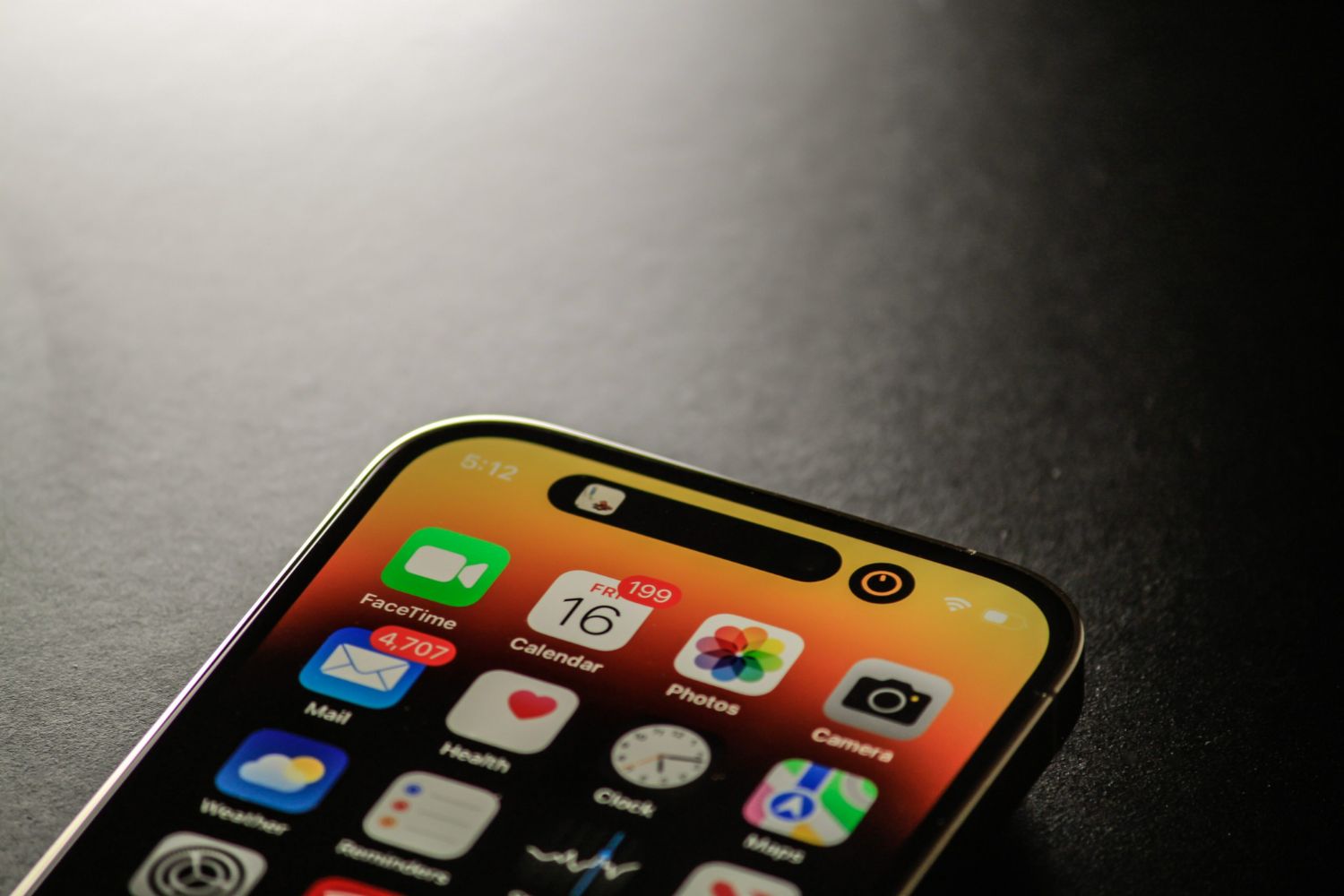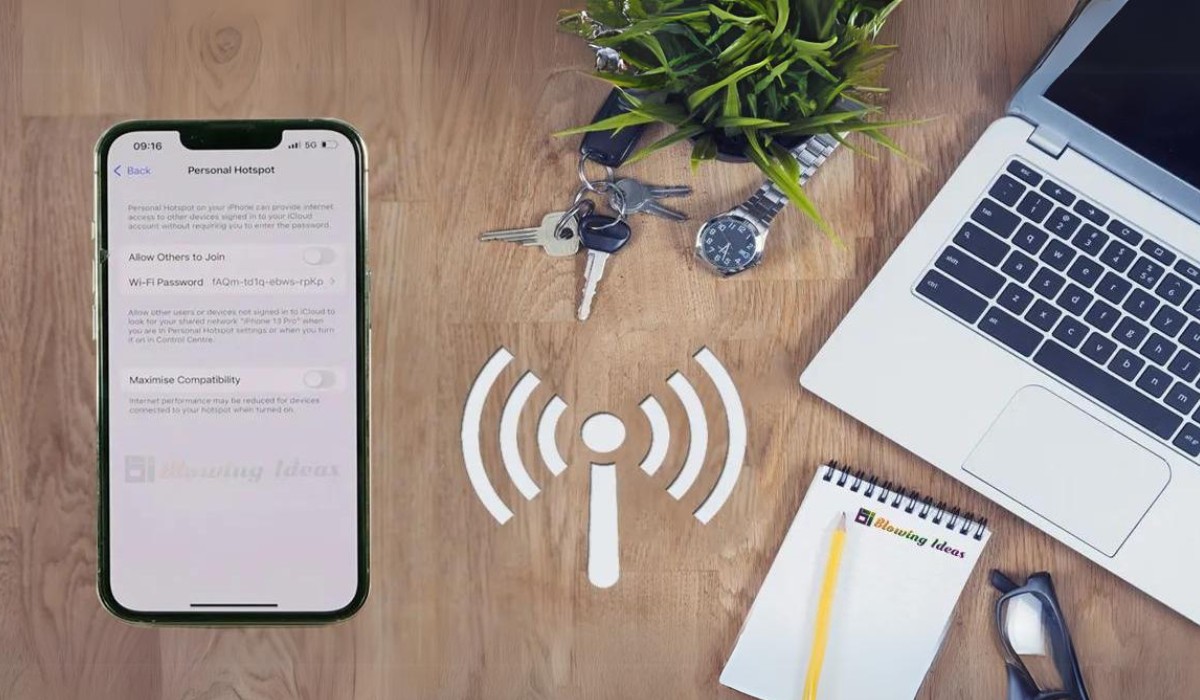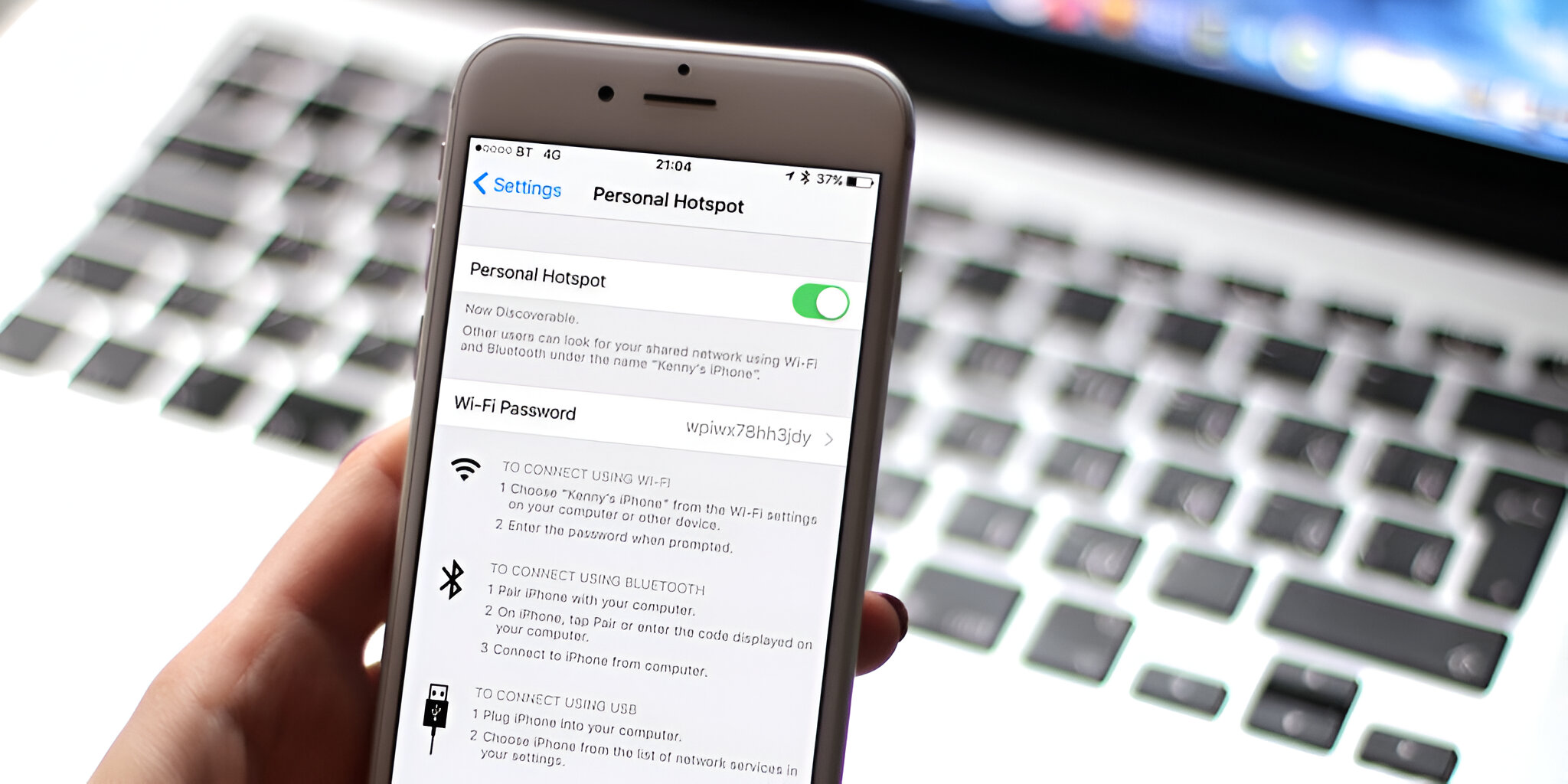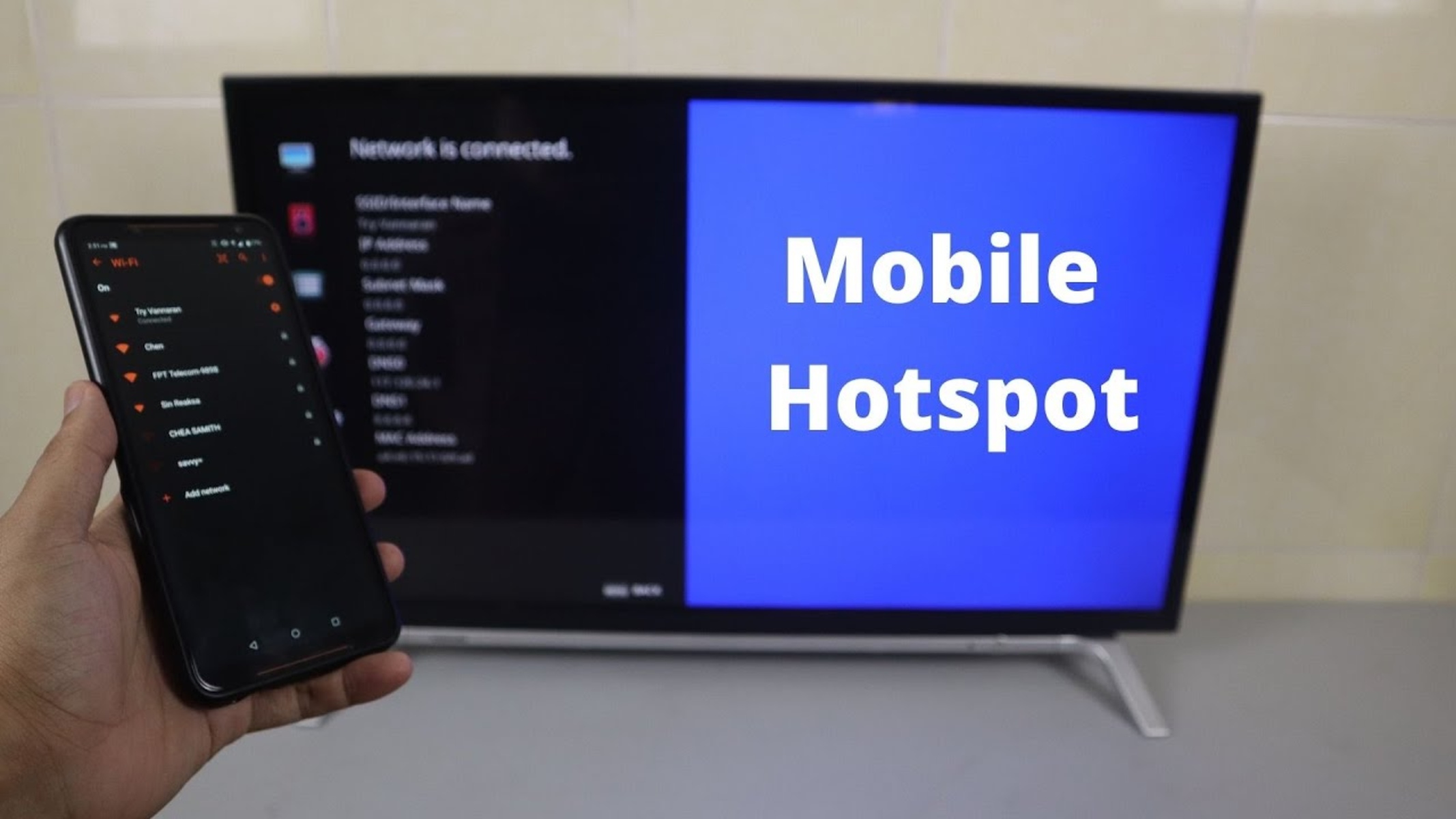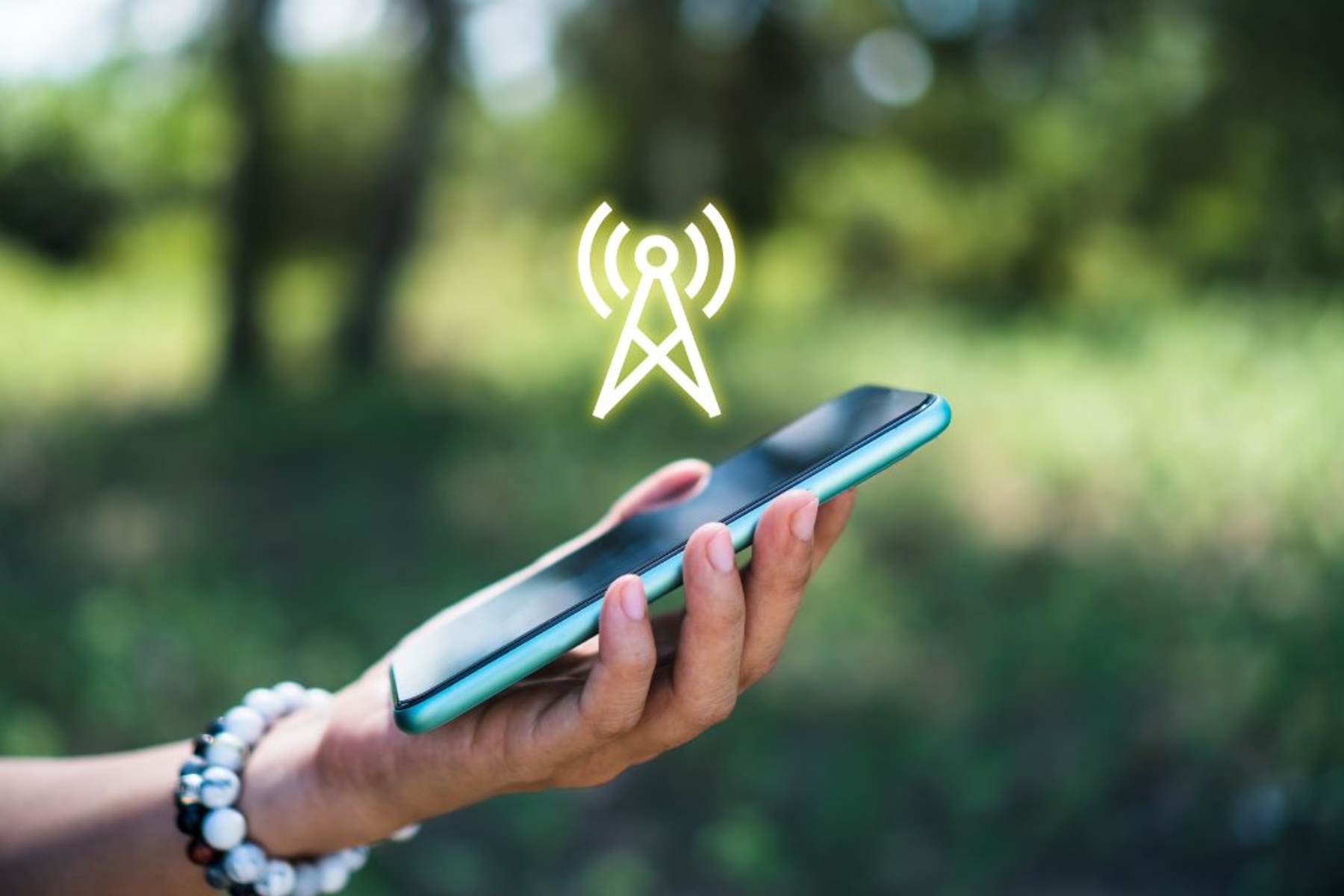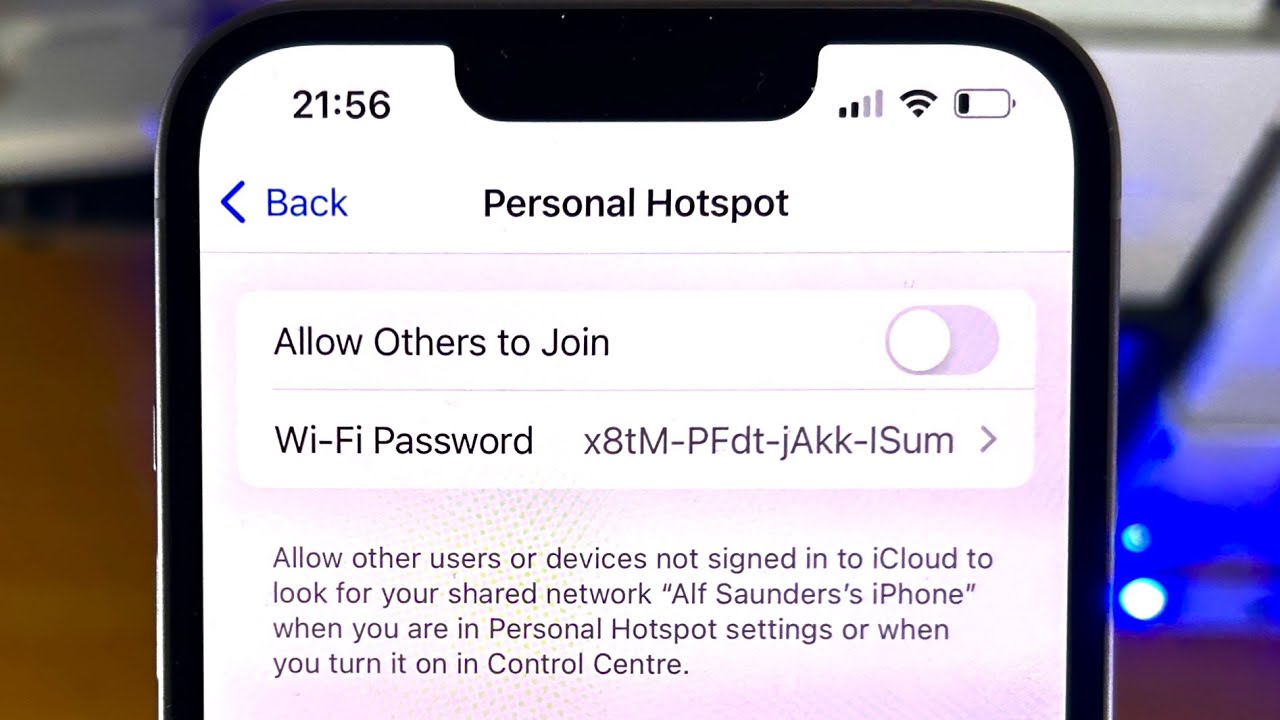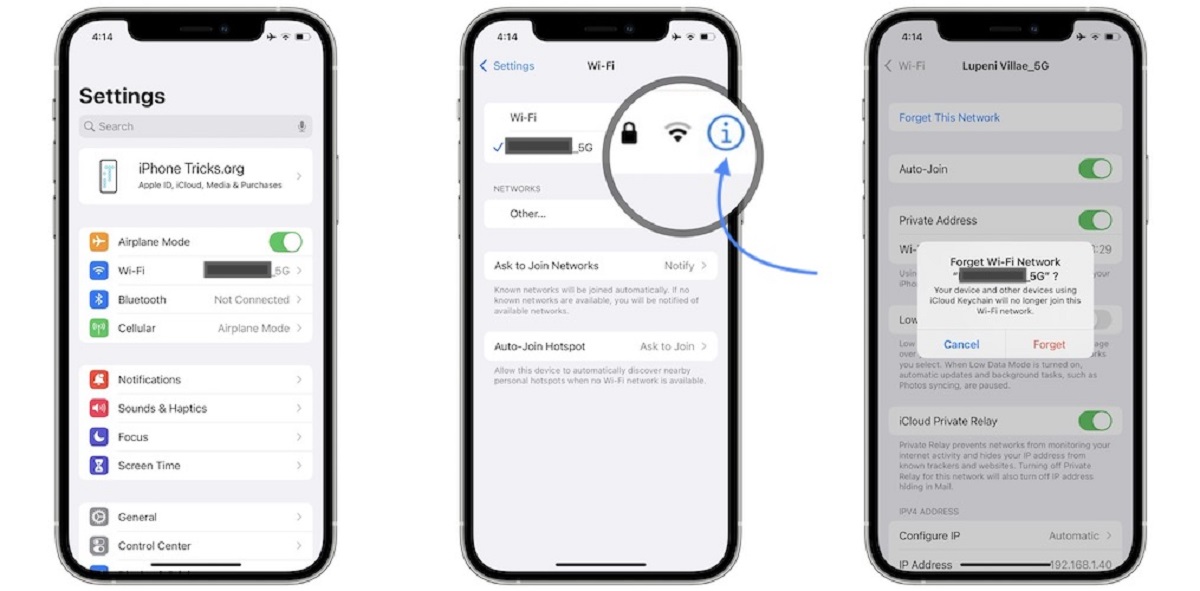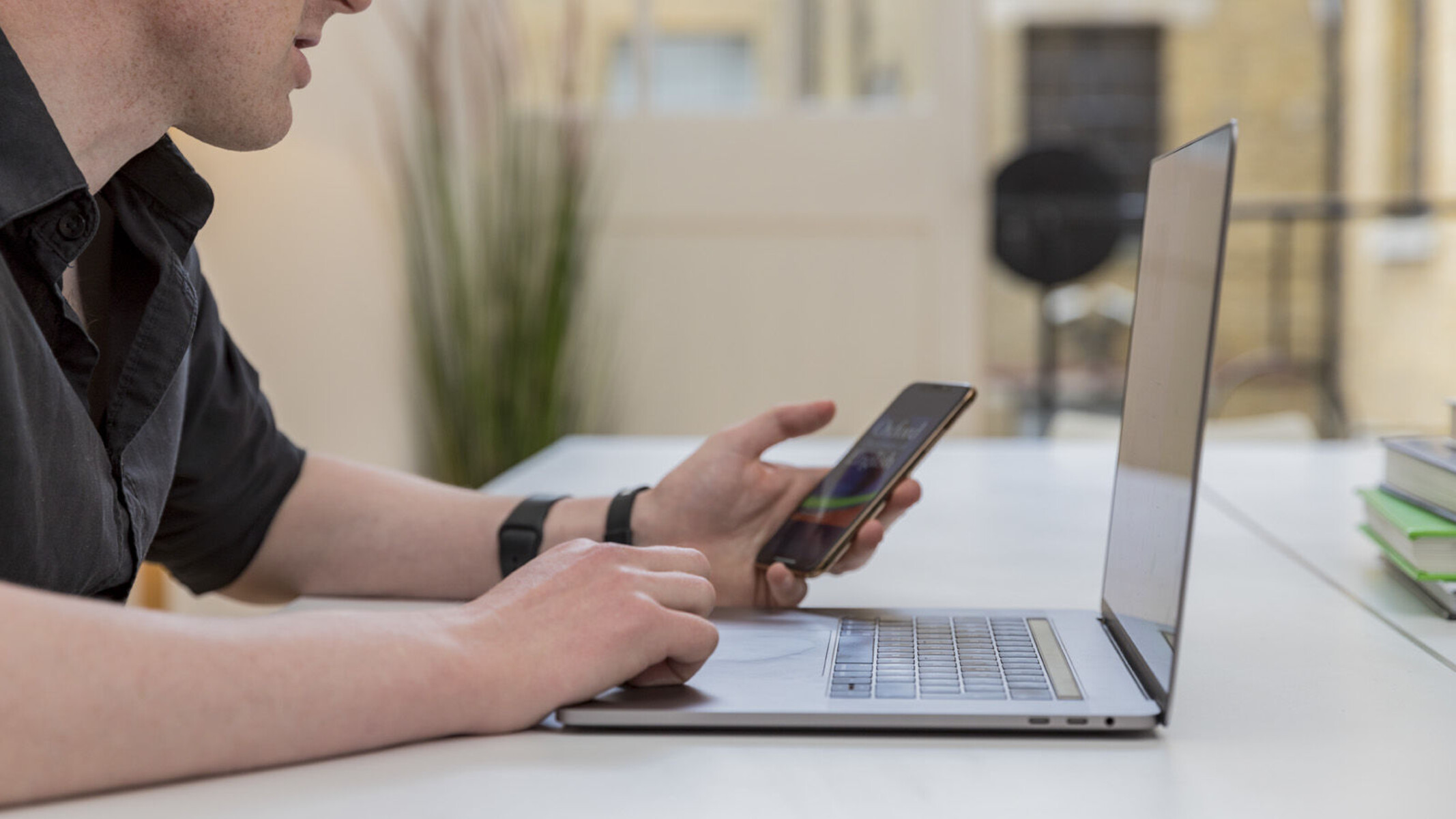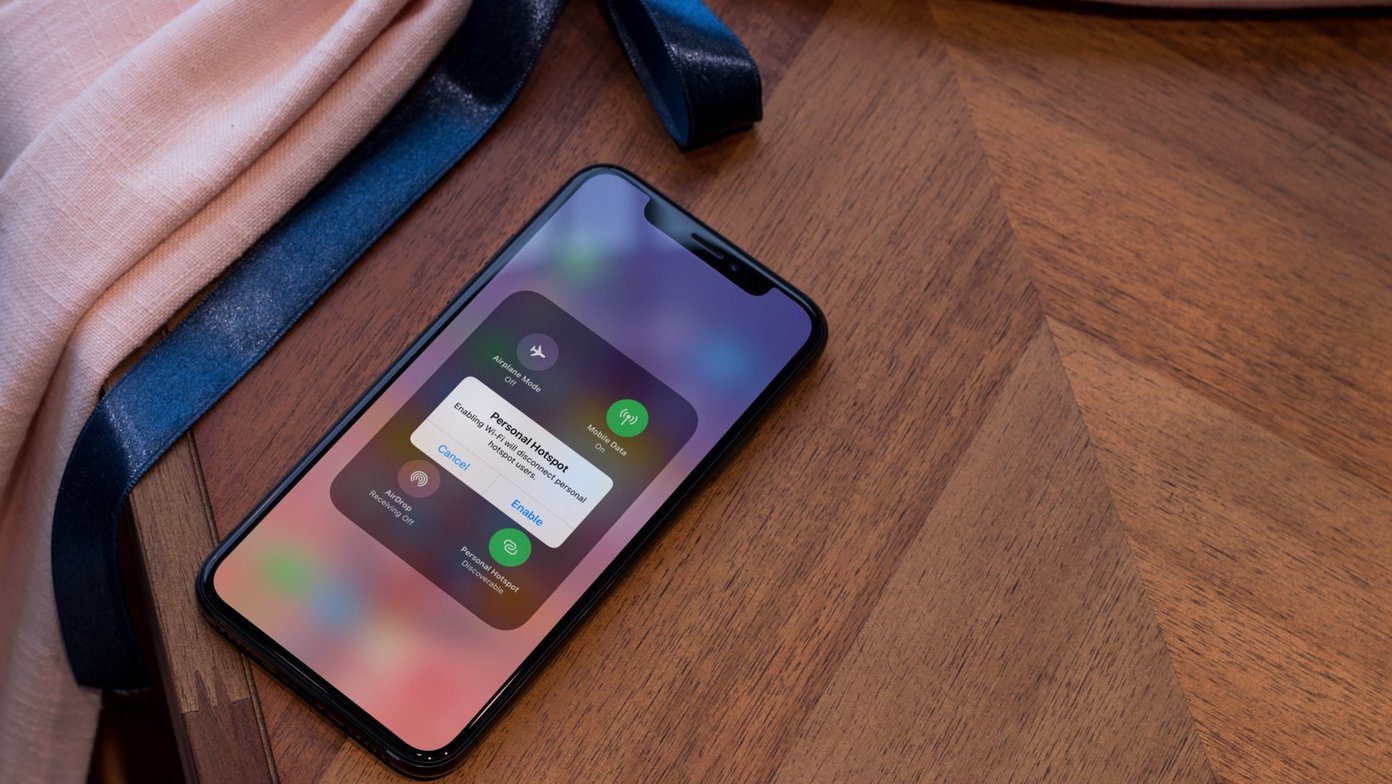Introduction
When you're on the go and in need of a reliable internet connection, your iPhone's hotspot feature can be a lifesaver. Whether you're working remotely, traveling, or simply dealing with a spotty Wi-Fi connection, being able to tether your devices to your iPhone for internet access is incredibly convenient. However, there are times when the iPhone hotspot may not work as expected, leaving you frustrated and disconnected.
In this article, we'll explore common iPhone hotspot issues and provide troubleshooting tips to help you resolve them. From software updates to network settings, we'll delve into the various steps you can take to get your iPhone hotspot up and running smoothly again. By understanding these troubleshooting methods, you can save time, frustration, and potentially avoid the need for professional assistance.
So, if you've ever found yourself in a situation where your iPhone hotspot isn't functioning as it should, fear not. With the right knowledge and a bit of patience, you can often resolve these issues on your own. Let's dive into the troubleshooting process and get your iPhone hotspot back on track.
Check for Software Updates
One of the initial steps in troubleshooting iPhone hotspot issues is to ensure that your device's software is up to date. Software updates often include bug fixes and improvements that can address connectivity issues, including problems with the hotspot feature. Here's how you can check for and install software updates on your iPhone:
-
Navigate to Settings: Open the "Settings" app on your iPhone. It's typically represented by a gear icon and can be found on your home screen.
-
Go to General: Scroll down and tap on "General" to access the general settings for your device.
-
Select Software Update: Within the General settings, tap on "Software Update." Your iPhone will then check for available updates.
-
Install Updates: If an update is available, you will be prompted to download and install it. Ensure that your iPhone is connected to a stable Wi-Fi network and has sufficient battery life to complete the update process.
By keeping your iPhone's software up to date, you can take advantage of the latest improvements and fixes provided by Apple. This can often address underlying issues that may be affecting the functionality of your iPhone hotspot. Additionally, staying current with software updates helps to enhance the overall performance and security of your device.
In some cases, a software update alone can resolve connectivity issues, making it a crucial step in troubleshooting your iPhone hotspot. However, if updating your device's software does not resolve the problem, there are additional steps you can take to further troubleshoot and potentially resolve the issue.
Restart Your iPhone
When it comes to troubleshooting technology-related issues, the age-old adage of "turn it off and on again" holds true more often than not. Restarting your iPhone can work wonders in resolving various connectivity issues, including problems with the hotspot feature. This simple yet effective step can help clear out temporary glitches, refresh system processes, and potentially restore the functionality of your iPhone hotspot.
To restart your iPhone, follow these straightforward steps:
-
Press and Hold Power Button: Locate the power button on your iPhone, typically found on the right side of the device (or the top for older models). Press and hold this button until the "slide to power off" slider appears on the screen.
-
Slide to Power Off: Once the slider appears, swipe it from left to right to power off your iPhone. Wait for the device to completely shut down.
-
Power On Your iPhone: After your iPhone has powered off, press and hold the power button again until the Apple logo appears on the screen. Release the button and allow your iPhone to boot up.
By performing a restart, you give your iPhone a fresh start, allowing it to reinitialize its processes and potentially clear any underlying issues that may have been affecting the hotspot functionality. This simple step can often work wonders in resolving connectivity problems, and it's a quick and easy process that anyone can perform.
It's important to note that a restart is different from a reset. When you restart your iPhone, you are simply powering it off and then turning it back on. A reset, on the other hand, involves restoring the device to its factory settings, which should only be done as a last resort for more persistent issues.
In many cases, a simple restart can effectively resolve iPhone hotspot issues, saving you time and frustration. However, if the problem persists after restarting your device, there are additional troubleshooting steps you can take to further address the issue.
In the next section, we'll explore how to check cellular data and hotspot settings on your iPhone, providing insights into potential configurations that may impact the functionality of the hotspot feature.
Check Cellular Data and Hotspot Settings
Ensuring that the cellular data and hotspot settings on your iPhone are configured correctly is crucial in troubleshooting hotspot issues. By examining and adjusting these settings, you can address potential configuration conflicts that may be impacting the functionality of the hotspot feature. Here's a detailed look at how you can check and adjust these settings on your iPhone:
Verify Cellular Data Connection
- Navigate to Settings: Open the "Settings" app on your iPhone and tap on "Cellular" to access the cellular settings.
- Check Cellular Data Status: Ensure that the "Cellular Data" toggle is switched on. This setting allows your iPhone to connect to the internet using your cellular network. If it's off, toggle it on to enable cellular data.
Review Hotspot Settings
- Access Personal Hotspot: Within the "Cellular" settings, tap on "Personal Hotspot" to view and adjust hotspot settings.
- Enable Personal Hotspot: Ensure that the "Personal Hotspot" feature is enabled. If it's off, toggle it on to activate the hotspot functionality.
- Configure Wi-Fi Password: Check the Wi-Fi password set for your hotspot. If needed, update the password to ensure it's secure and known to the devices you intend to connect.
Check Hotspot Configuration
- Review Hotspot Name: Verify the name of your hotspot network (SSID) and ensure it's recognizable to the devices you want to connect.
- Adjust Hotspot Channel: If experiencing connectivity issues, consider changing the Wi-Fi channel for the hotspot to avoid interference from other networks in the vicinity.
- Monitor Connected Devices: Keep an eye on the list of connected devices to ensure that only authorized devices are using your hotspot.
Optimize Hotspot Settings
- Limit Hotspot Connections: If you encounter performance issues, consider limiting the number of devices that can connect to your hotspot simultaneously.
- Enable Low Data Mode: In the "Cellular" settings, you can enable "Low Data Mode" to reduce Wi-Fi and cellular data usage, potentially improving hotspot performance.
By thoroughly reviewing and adjusting these cellular data and hotspot settings, you can address potential misconfigurations and optimize the functionality of your iPhone hotspot. These steps provide a comprehensive approach to troubleshooting hotspot issues, allowing you to fine-tune the settings to suit your connectivity needs.
In the following section, we'll delve into the process of resetting network settings on your iPhone, which can further aid in resolving persistent hotspot issues.
Reset Network Settings
Resetting network settings on your iPhone can serve as a powerful troubleshooting step when dealing with persistent connectivity issues, including problems with the hotspot feature. This process essentially clears out network-related configurations and preferences, allowing your device to start fresh when establishing connections. While this action resets Wi-Fi, cellular, and VPN settings, it does not affect your personal data or media.
To initiate a network settings reset on your iPhone, follow these steps:
-
Access Settings: Open the "Settings" app on your iPhone, and navigate to "General."
-
Select Reset: Within the General settings, tap on "Reset" to access the reset options.
-
Choose Reset Network Settings: Tap on "Reset Network Settings." You may be prompted to enter your device passcode to confirm the action.
-
Confirm Reset: A confirmation pop-up will appear, asking if you want to reset network settings. Confirm the action, and your iPhone will proceed with the reset process.
Once the network settings reset is complete, your iPhone will restart, and the device's network configurations will be restored to their default state. It's important to note that after the reset, you will need to reconfigure Wi-Fi networks, re-enter Wi-Fi passwords, and re-establish any VPN connections.
By performing a network settings reset, you effectively eliminate potential configuration conflicts and irregularities that may have been impacting the functionality of your iPhone hotspot. This step provides a comprehensive approach to troubleshooting connectivity issues, offering a clean slate for your device's network settings to be reestablished.
It's worth mentioning that a network settings reset is a safe and reversible process that does not erase your personal data. However, it can significantly improve the overall stability and performance of your device's network connections, making it a valuable step in resolving persistent hotspot issues.
In the next section, we'll explore the importance of updating carrier settings and how it can contribute to resolving iPhone hotspot issues.
Update Carrier Settings
Updating your iPhone's carrier settings can play a crucial role in addressing hotspot issues and improving overall connectivity. Carrier settings include various configurations related to network connectivity, call and data services, and carrier-specific features. By ensuring that your device is running the latest carrier settings, you can potentially resolve compatibility issues and enhance the performance of the hotspot feature.
Here's how you can check for and update carrier settings on your iPhone:
-
Connect to a Stable Network: Before proceeding with the carrier settings update, ensure that your iPhone is connected to a stable Wi-Fi or cellular network. A reliable connection is essential for downloading and installing the carrier settings update.
-
Navigate to Settings: Open the "Settings" app on your iPhone and tap on "General" to access the general settings for your device.
-
Select About: Within the General settings, tap on "About." This section provides essential information about your device, including carrier details and available updates.
-
Check for Carrier Settings Update: If a carrier settings update is available, a prompt will appear, indicating that a new update can be installed. Tap on "Update" to proceed with the installation.
-
Install Carrier Settings Update: Follow the on-screen instructions to download and install the carrier settings update. Ensure that your iPhone remains connected to the network throughout the update process.
-
Restart Your iPhone: After installing the carrier settings update, it's advisable to restart your iPhone to ensure that the new configurations are applied effectively.
Updating carrier settings can address network-related issues, including those affecting the hotspot feature. These updates often include optimizations, bug fixes, and compatibility improvements provided by your carrier. By staying current with carrier settings, you can ensure that your iPhone is equipped to deliver reliable and efficient connectivity, benefiting not only the hotspot functionality but also overall network performance.
In some cases, a carrier settings update alone can resolve hotspot issues, making it an essential step in troubleshooting connectivity problems. However, if updating carrier settings does not resolve the issue, there are additional measures you can take to further troubleshoot and potentially resolve persistent hotspot issues.
In the next section, we'll explore how to contact your carrier for assistance and additional support in addressing iPhone hotspot issues.
Contact Your Carrier
If you've exhausted the troubleshooting steps outlined earlier and are still experiencing persistent issues with your iPhone hotspot, reaching out to your carrier for assistance is a logical next step. Your carrier's customer support team can provide valuable insights, guidance, and technical assistance to help address connectivity issues and ensure that your iPhone hotspot functions optimally.
When contacting your carrier, it's helpful to have specific details about the problems you're encountering with your iPhone hotspot. This may include information about error messages, the frequency of connectivity issues, and any troubleshooting steps you've already taken. By providing as much relevant information as possible, you can enable the support team to better understand and diagnose the root cause of the problem.
The customer support channels offered by carriers typically include phone support, online chat, and in-person assistance at retail locations. When engaging with the support team, be prepared to follow their instructions and potentially perform additional troubleshooting steps as advised. This may involve verifying account details, checking for network outages in your area, or undergoing further diagnostic tests to pinpoint the issue.
In some cases, carriers may also be able to remotely push updates or configurations to your device to address specific network-related issues. This level of support can be instrumental in resolving complex connectivity challenges, including those affecting the functionality of your iPhone hotspot.
Additionally, if the issue is determined to be hardware-related, your carrier may guide you on the appropriate steps for device inspection, repair, or replacement. By leveraging the expertise and resources of your carrier's support team, you can navigate through more intricate technical matters and explore potential solutions that align with your specific situation.
Overall, contacting your carrier for assistance with iPhone hotspot issues can provide a direct line to specialized support and resources tailored to your network and device. By collaborating with your carrier's support team, you can access the expertise needed to troubleshoot and resolve persistent connectivity challenges, ensuring that your iPhone hotspot operates reliably and efficiently.
Remember, the support provided by your carrier is designed to assist you in maximizing the functionality of your iPhone hotspot and maintaining a seamless connectivity experience. If you're facing ongoing issues, don't hesitate to reach out to your carrier for the support and guidance you need to address the situation effectively.
Conclusion
In conclusion, troubleshooting iPhone hotspot issues requires a systematic approach that encompasses software updates, device settings, and potential carrier-related considerations. By following the troubleshooting tips outlined in this article, you can navigate through common connectivity challenges and work towards restoring the functionality of your iPhone hotspot.
From checking for software updates to reviewing cellular data and hotspot settings, the initial steps in troubleshooting aim to address potential software and configuration-related factors that may impact hotspot performance. These proactive measures empower users to take control of their device's settings and optimize connectivity for a seamless hotspot experience.
Furthermore, the significance of resetting network settings and updating carrier configurations cannot be overstated. These actions provide a comprehensive approach to resolving persistent hotspot issues, addressing potential network conflicts, and ensuring compatibility with carrier-specific optimizations.
In cases where troubleshooting steps do not yield the desired results, reaching out to the carrier for specialized support and guidance becomes crucial. Leveraging the expertise and resources of the carrier's support team can provide valuable insights, remote updates, and tailored assistance in addressing complex connectivity challenges.
Ultimately, the troubleshooting journey for iPhone hotspot issues is an empowering endeavor that enables users to take charge of their device's connectivity. By understanding the nuances of troubleshooting and engaging with carrier support when needed, individuals can navigate through technical hurdles and ensure that their iPhone hotspot operates reliably and efficiently.
As technology continues to evolve, it's important to stay informed about troubleshooting methods and best practices for maintaining optimal connectivity. By incorporating these troubleshooting tips into your device management approach, you can enhance the reliability of your iPhone hotspot and enjoy uninterrupted internet access wherever you go.







